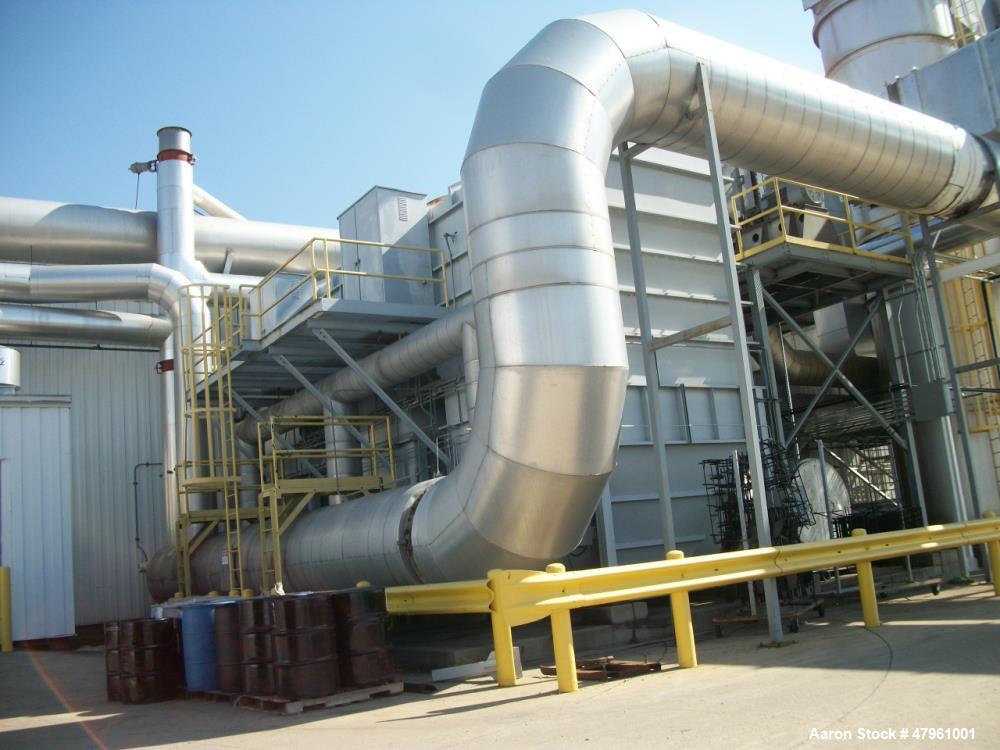Are you in the market for a cost-effective and user-friendly air pollution abatement product? More specifically, used catalytic and thermal oxidizers that will be a good requirement match? There are a few things to consider when searching for used oxidizers for industrial emission abatement of HAPs (Hazardous Air Pollutants), VOCs (Volatile Organic Compounds), NOX (Nitrogen Oxides), and other odors caused by industrial processes. Things to consider prior to your investment, catalytic or thermal technology and how it works, the importance of the life cycle cost, and other options.
How the Catalytic and Thermal Oxidizers Works
Both catalytic and thermal oxidizers are processes that works in a similar fashion of the technological abatement of reducing air pollution caused by industrial process odors. The Catalytic oxidizer takes the VOC and HAP process odors either pulled or pushed through a fan into a heat exchanger inside oxidizer. Can run in a shorter amount of time, less than 24 hours and warms up quickly without negative effect on the life of the equipment. The gas pollutants are converted as they go through the catalytic oxidizer and pass through to the other side as heat, water vapor, and carbon dioxide with a regulatory compliance guaranteed of a 99% DRE (Destruction Rate Efficiency).
The Thermal oxidizer also takes the VOC and HAP process odors into the system fan. However, it differentiates from the catalytic oxidizer process because once inside the thermal oxidizer, the pollutants pass twice through a tube and shell side at a specific temperature and specific timeframe before the heat is released. Then the pollutants are then converted into heat, water vapor, and carbon dioxide within the reactor chamber in the oxidizer before being released into the atmosphere.
Importance of the Life Cycle Cost
Another thing to consider is the overall life-cycle cost of your investment and not go by the initial purchased price. If the technology you purchased is not suitable for your required process needs, then facing the reality of additional costs in the life of the technology is not a good business acumen.
Consider these factors in addition to your initial investment cost:
• Location and installation ease when moving
• Basic structural requirements and weight must be satisfied
• Age and condition of the oxidizer
• Service and oxidizer availability
• Oxidizer’s Energy efficiency
• Emission limits to be achieved and VOC loading
• Stack height – D1 calculations must be satisfied for the site
• Items included/excluded or turn-key
• Access and Space requirement must be met
• Additional information available as well as a back-up or spare parts and equipment manuals
Other Options
There are different types of used oxidizers for different industrial emission, so before purchasing the used oxidizer itself, a precise assessment of the exhaust loading and an accurate exhaust measurement is a must.
Different Types of Catalytic Oxidizers:
• Regenerative Catalytic Oxidizer (RCO)
o Delivers low operational cost due to reduced temperature usage
Different Types of Thermal Oxidizers:
• Recuperative Thermal Oxidizer (RTO)
o Modern technology choice due to low operational cost while achieving the highest destruction of VOCs




